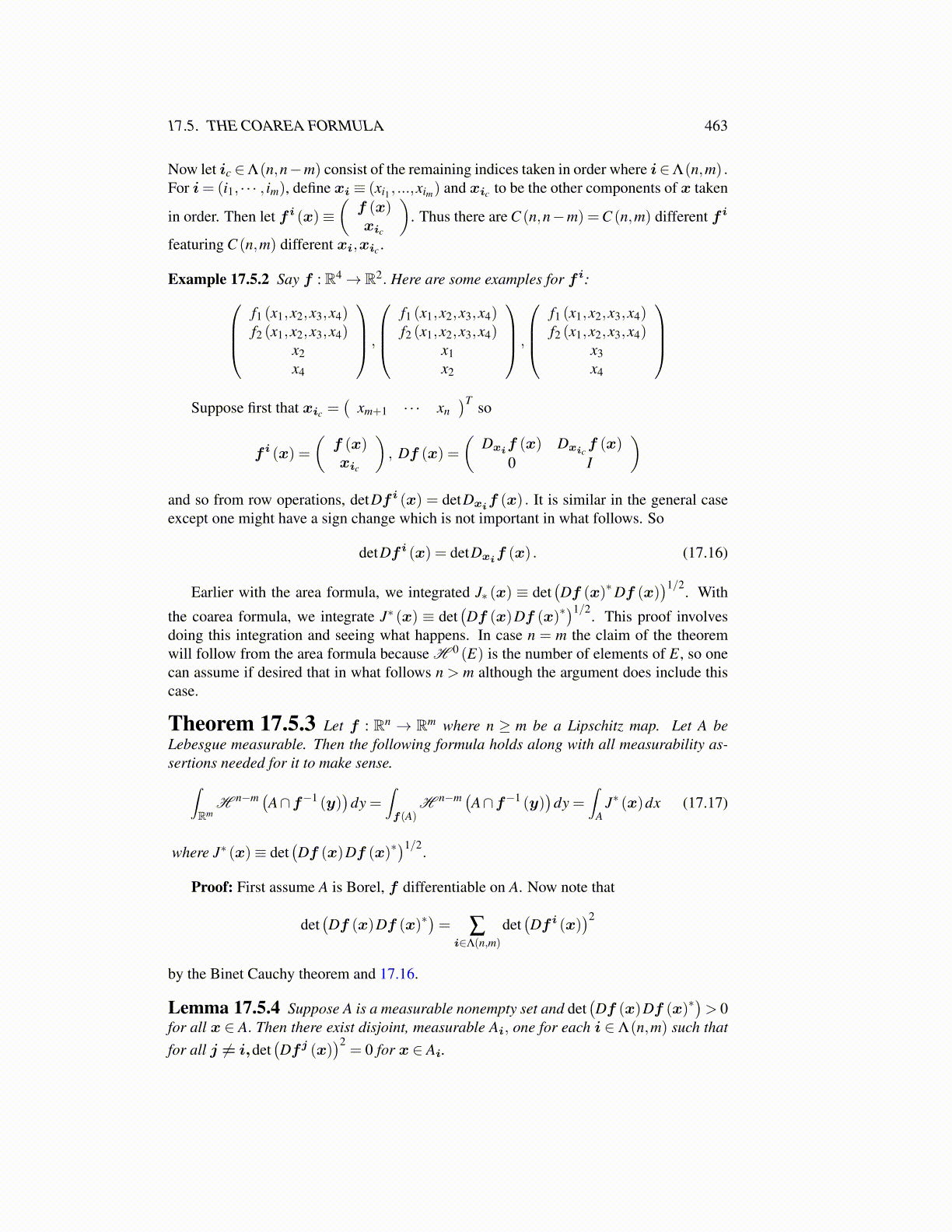
17.5. THE COAREA FORMULA 463
Now let ic ∈Λ(n,n−m) consist of the remaining indices taken in order where i∈Λ(n,m) .For i= (i1, · · · , im), define xi ≡ (xi1 , ...,xim) and xic to be the other components of x taken
in order. Then let f i (x)≡(f (x)xic
). Thus there are C (n,n−m) =C (n,m) different f i
featuring C (n,m) different xi,xic .
Example 17.5.2 Say f : R4→ R2. Here are some examples for f i:f1 (x1,x2,x3,x4)f2 (x1,x2,x3,x4)
x2x4
,
f1 (x1,x2,x3,x4)f2 (x1,x2,x3,x4)
x1x2
,
f1 (x1,x2,x3,x4)f2 (x1,x2,x3,x4)
x3x4
Suppose first that xic =
(xm+1 · · · xn
)T so
f i (x) =
(f (x)xic
), Df (x) =
(Dxi
f (x) Dxicf (x)
0 I
)and so from row operations, detDf i (x) = detDxi
f (x) . It is similar in the general caseexcept one might have a sign change which is not important in what follows. So
detDf i (x) = detDxif (x) . (17.16)
Earlier with the area formula, we integrated J∗ (x) ≡ det(Df (x)∗Df (x)
)1/2. With
the coarea formula, we integrate J∗ (x) ≡ det(Df (x)Df (x)∗
)1/2. This proof involvesdoing this integration and seeing what happens. In case n = m the claim of the theoremwill follow from the area formula because H 0 (E) is the number of elements of E, so onecan assume if desired that in what follows n > m although the argument does include thiscase.
Theorem 17.5.3 Let f : Rn → Rm where n ≥ m be a Lipschitz map. Let A beLebesgue measurable. Then the following formula holds along with all measurability as-sertions needed for it to make sense.∫
RmH n−m (A∩f−1 (y)
)dy =
∫f(A)
H n−m (A∩f−1 (y))
dy =∫
AJ∗ (x)dx (17.17)
where J∗ (x)≡ det(Df (x)Df (x)∗
)1/2.
Proof: First assume A is Borel, f differentiable on A. Now note that
det(Df (x)Df (x)∗
)= ∑
i∈Λ(n,m)
det(Df i (x)
)2
by the Binet Cauchy theorem and 17.16.
Lemma 17.5.4 Suppose A is a measurable nonempty set and det(Df (x)Df (x)∗
)> 0
for all x ∈ A. Then there exist disjoint, measurable Ai, one for each i ∈ Λ(n,m) such thatfor all j ̸= i,det
(Df j (x)
)2= 0 for x ∈ Ai.